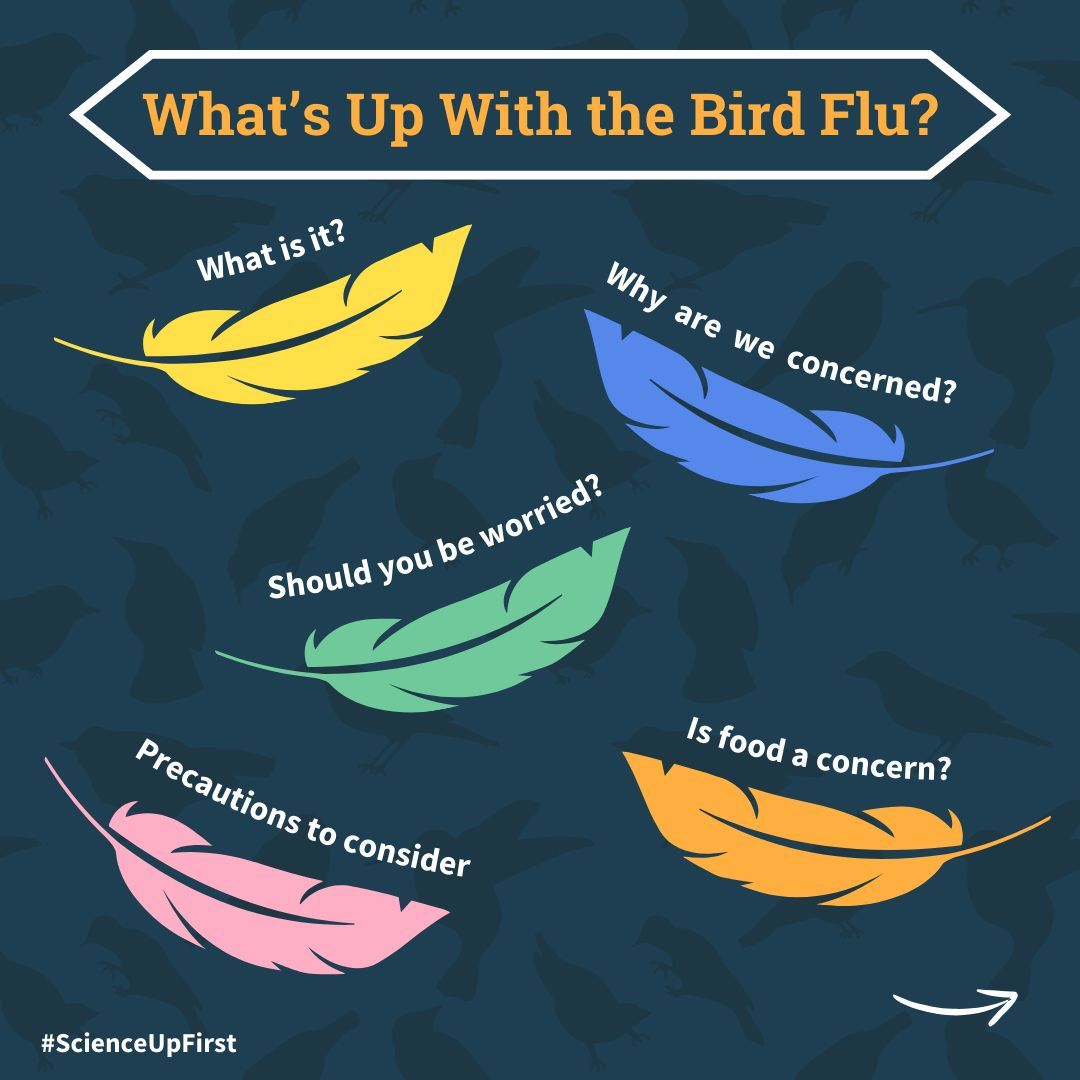






The type of avian influenza virus, a.k.a bird flu, that is currently making headlines is H5N1, but other types exist (e.g. H5N6, h2N8, H7N4, H9N2, H10N3) (1,8,25).
H5N1 bird flu has infected over 11 million birds in Canada since 2021 (24,20). Earlier this year the first widespread outbreak of bird flu in cows was detected in the U.S. and is still going on (9).
In rare isolated cases, H5N1 can also infect other mammals such as cats, dogs, otters, foxes, badgers, coyotes, lynx, polar bears, raccoons, opossums, through the consumption of sick or dead birds (2).
Transmission to humans remains rare, but the first confirmed human case from contact with another infected mammal (i.e. cows) raises some concerns among experts (10).
As of now, you shouldn’t worry as the risk for the general population remains low. It is best to avoid any contact with dead or sick looking birds and if possible report them (see reference 24 for details).
Sources: https://tinyurl.com/SUFBirdFlu
Share our original Tweet!
Over 11 million birds have been infected with bird flu (H5N1) in Canada since 2021.
— ScienceUpFirst | LaScienced'Abord (@ScienceUpFirst) May 22, 2024
Recently, there was the first widespread outbreak in cows and a cow-to-human case in the US.
There’s no need to worry, but read up on things below https://t.co/SEb3R3tKvw#ScienceUpFirst pic.twitter.com/H92NYfjBBY
View our original Instagram Post!



